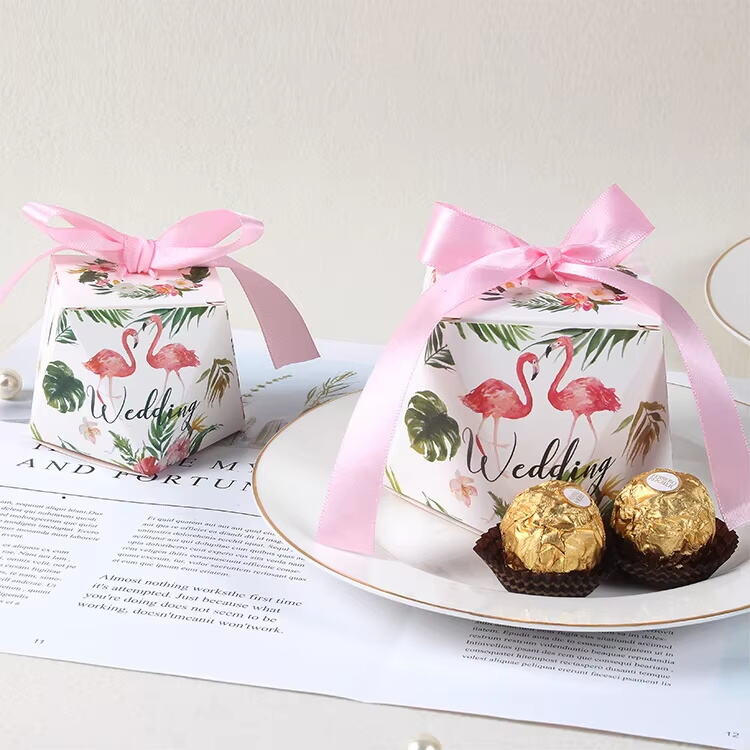Introduction: The Appeal of Boutique Packaging in the Chocolate Industry
Overview of the Growing Demand for Luxury Chocolate Packaging
The luxury chocolate market has witnessed a significant surge in consumer interest, driven by a growing demand for premium and aesthetically pleasing chocolate options. Market research indicates that consumers are increasingly opting for high-end chocolate offerings, valuing unique experiences as part of their purchase. According to industry reports, the gourmet chocolate market has experienced impressive growth rates over the past few years, as consumers gravitate towards luxurious and high-quality products. Social media platforms have further amplified this trend, as beautifully packaged chocolates often find their way into shared content, influencing consumer expectations and preferences. Instagram and Pinterest, for example, showcase exquisite chocolate packaging, setting a high standard for what consumers consider desirable in product presentation.
Why Boutique Packaging Matters in a Competitive Market
In a saturated market, boutique packaging serves as a crucial differentiator for brands, offering an effective way to stand out from the competition. Visually appealing packaging not only attracts attention but also exerts significant psychological influence on consumer purchasing decisions. Studies in consumer psychology have shown that attractive packaging can evoke positive emotions, increasing the likelihood of purchase. For instance, a case study of varied gourmet chocolate brands illustrates how a focus on boutique packaging led to heightened brand recognition and expanded market share. Successful brands that have leveraged unique and distinctive packaging have reported enhanced customer engagement and loyalty, underscoring the importance of packaging design in establishing a brand identity in the crowded chocolate industry.
Enhanced Brand Perception Through Boutique Packaging
Creating a Premium Visual Identity with Boutique Designs
Boutique designs play a crucial role in developing a premium visual identity that distinguishes brands in the chocolate industry. Elements such as color schemes, typography, and imagery are vital components of these designs, each contributing to the overall aesthetic appeal. For instance, incorporating rich colors and elegant fonts can give the packaging a luxurious feel that conveys exclusivity. Brands like Godiva and Lindt have successfully cultivated a premium identity through distinctive and visually appealing packaging. These companies exemplify how consistent branding across product lines enhances recognition and fosters consumer loyalty, transforming occasional buyers into dedicated customers.
Standing Out on Shelves with Unique Packaging Aesthetics
In a crowded marketplace, innovative packaging structures and materials enable chocolate products to capture consumer attention on retail shelves. Unique elements, such as embossed designs or the use of eco-friendly materials, can distinguish a brand's products from competitors. Surveys indicate that consumers are increasingly drawn to such distinctive packaging styles, with over 70% noting it influences their purchasing decisions. Strategic use of packaging shape and size also plays a role in attracting attention; for example, a sleek, elongated box can suggest sophistication and higher product value. Ultimately, these tactics help to elevate the brand's visibility and appeal in retail environments.
Premium Customer Experience and Unboxing Appeal
Elevating Sensory Engagement with Tactile Materials
The use of tactile materials in chocolate packaging plays a crucial role in enhancing consumer engagement. Studies on sensory perception have shown that touch is a significant determinant of consumer satisfaction and product appeal. By incorporating materials that offer a rich tactile experience, brands can create a premium feel and encourage a deeper connection with their products. Embellishments like embossing and foil stamping, prevalent in the industry as noted by Ben Levitz of Studio On Fire, are examples of tactile enhancements that not only add aesthetic value but also create a distinctive consumer experience. For example, premium chocolates often use textured paper or soft-touch coatings that invite touch, enhancing the sensory experience.
Designing for Memorability: Interactive and Reusable Elements
Interactive and reusable packaging elements are gaining traction as they contribute to memorable and environmentally-friendly consumer experiences. Packaging that includes features such as peel-off elements or QR codes doesn't just engage consumers; it also establishes a lasting impression. For instance, campaigns that incorporate augmented reality or smartphone integrations are becoming popular as they bridge the gap between physical products and digital experiences, aligning with smart packaging trends highlighted by Vicki Strull. Furthermore, the rise of reusable packaging appeals to sustainability-conscious consumers, offering additional value and encouraging repeat interactions with the brand.
Sustainability and Eco-Friendly Boutique Packaging Options
Aligning with Eco-Conscious Consumer Values
In recent years, there has been a noticeable shift in consumer purchasing decisions towards sustainability. According to studies, a growing number of consumers are prioritizing eco-friendly products, particularly in the chocolate industry. An impressive 74% of consumers reported they would pay more for sustainable packaging. Notable brands like Alter Eco and Tony’s Chocolonely have become leaders in the sustainable chocolate market by prioritizing environmentally friendly practices and packaging.
Biodegradable and Recyclable Material Innovations
New biodegradable and recyclable materials are transforming boutique packaging, significantly reducing the industry's environmental impact. For instance, innovations such as compostable films and biodegradable paper wraps have made substantial inroads. Data from the Global Packaging Trends Report indicates that sustainable materials have decreased packaging waste by up to 30% in the confectionery segment. Regulations encouraging sustainable practices, like the EU's Packaging and Packaging Waste Directive, further promote the adoption of these innovations.
Reducing Carbon Footprint While Maintaining Luxury Appeal
Balancing sustainability with a luxury appeal poses a unique challenge for premium chocolate brands. However, many companies have successfully navigated this balance with innovative strategies. For example, Lindt has made strides towards carbon-neutral production while preserving the luxurious look of their packaging. Experts posit that sustainable packaging will become the norm in the premium chocolate market, driven by both consumer demand and industry innovation.
Conclusion: Why Boutique Packaging is Essential for Chocolate Success
Investing in boutique packaging offers numerous long-term benefits, crucial for achieving customer loyalty and enhancing brand recognition in the chocolate industry. Understanding the unique needs of boutique chocolate brands, such as the requirement for shorter runs and customized designs, is crucial. According to Vicki Strull, a brand packaging and design expert, boutique brands focus on versioned and limited edition packaging, which resonates with niche consumer bases. Studies have shown that packaging not only influences initial purchases but also fosters a deeper emotional connection to the brand, leading to repeated business and loyalty over time.
Boutique packaging plays a significant role in boosting brand recognition. High-end and tactile packaging—featuring embellishments like foil stamping and embossing—drives consumer interest, spending, and brand recall. According to experts, consumers are willing to pay a premium for packaging that stands out on the shelf and offers a tactile experience. This highlights the potential of boutique packaging to serve as an extension of marketing efforts, as noted in boutique industries like premium chocolates where standing out is increasingly important.
The future of boutique packaging in the chocolate industry is promising. As consumer preferences continue to evolve towards uniqueness and personalized experiences, there is an increasing demand for packaging solutions that engage and intrigue. Companies that leverage innovations in boutique packaging are likely to see improvements in customer engagement. This trend underscores the transformative role of packaging in shaping customer experiences and solidifying brand presence in the market.
FAQ
What is boutique packaging in the chocolate industry? Boutique packaging refers to premium, aesthetically pleasing packaging designs that make chocolates appear more luxurious and desirable, attracting consumer interest and enhancing brand recognition.
Why is boutique packaging important for luxury chocolates? It helps differentiate brands in a competitive market, influences consumer purchasing decisions through visual appeal, and enhances brand loyalty by creating unique experiences.
How does boutique packaging benefit consumer engagement? It uses tactile materials and designs, such as embossing and foil stamping, to elevate sensory engagement, thereby creating memorable and interactive experiences that resonate with consumers.
Is boutique packaging environmentally friendly? Many brands are incorporating eco-friendly practices, using biodegradable and recyclable materials to align with consumer demand for sustainability while maintaining a luxury appeal.
Table of Contents
- Introduction: The Appeal of Boutique Packaging in the Chocolate Industry
- Enhanced Brand Perception Through Boutique Packaging
- Premium Customer Experience and Unboxing Appeal
- Sustainability and Eco-Friendly Boutique Packaging Options
- Conclusion: Why Boutique Packaging is Essential for Chocolate Success
- FAQ
 EN
EN
 AR
AR
 BG
BG
 DA
DA
 NL
NL
 FI
FI
 FR
FR
 DE
DE
 IT
IT
 JA
JA
 KO
KO
 NO
NO
 PT
PT
 RU
RU
 ES
ES
 IW
IW
 TH
TH
 MS
MS
 HY
HY




